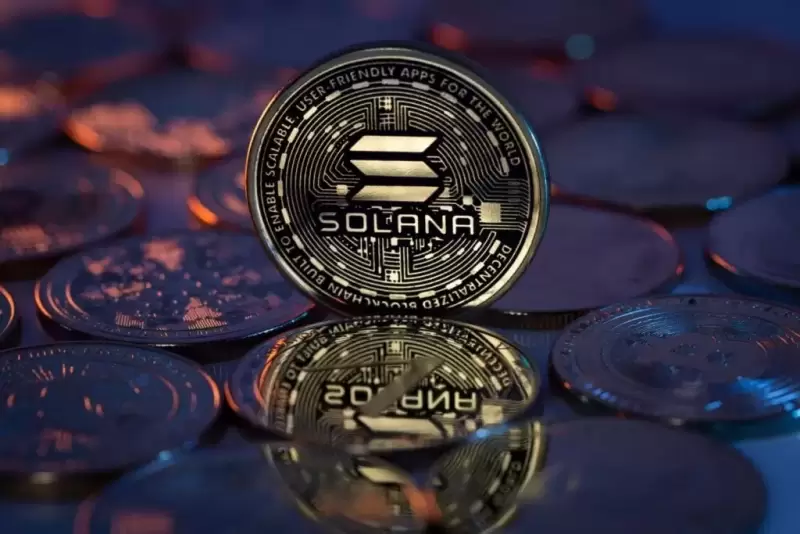 |
|
 |
|
 |
|
 |
|
 |
|
 |
|
 |
|
 |
|
 |
|
 |
|
 |
|
 |
|
 |
|
 |
|
 |
|
隨著比特幣現在可供機構投資者使用,這將提高資本的機會成本。大型機構投資者總是尋求將資金投入最高的風險調整回報。

Bitcoin's Impact on Innovation: A Radical Shift
比特幣對創新的影響:徹底的轉變
There is an ongoing debate within the Bitcoin community regarding the nature of its innovation—whether it is radical or incremental. Some argue that Bitcoin is merely the aggregation of several existing technologies, such as public key cryptography, computer networking, economic incentives, and social computing, each of which has been around for decades. Hence, they contend that while each individual component may have been a radical innovation in its own right, their combination in Bitcoin does not constitute a radical innovation.
比特幣社群內部一直在爭論其創新的本質——激進的還是漸進的。有些人認為,比特幣只是幾種現有技術的集合,例如公鑰密碼學、電腦網路、經濟激勵和社交計算,每一項技術都已經存在了幾十年。因此,他們認為,雖然每個單獨的組件本身可能是一項激進的創新,但它們在比特幣中的組合並不構成一項激進的創新。
Others, however, maintain that this aggregation of knowledge is highly non-trivial and hence qualifies as a radical innovation. For instance, representing transfers of value in a chain of blocks across a distributed network of computers is the very definition of radical innovation. I personally lean more towards the latter view, as I believe that systems integration as a tactic for innovation is extremely valuable and qualifies as innovation itself. The iPhone, Tesla Model 3, James Webb telescope, and autonomous drills used in shale fracking are all prime examples of supreme systems integration. Perhaps the best counterexamples of radical innovations that did not involve “just” systems integration would be the atomic bomb, airplane, and transistor, although I think a case could still be made.
然而,其他人則認為,這種知識的聚合非常重要,因此可以稱為激進的創新。例如,在分散式電腦網路上的區塊鏈中表示價值轉移就是激進創新的定義。我個人更傾向於後一種觀點,因為我相信系統整合作為一種創新策略是非常有價值的,並且可以算是創新本身。 iPhone、特斯拉 Model 3、詹姆斯韋伯望遠鏡和頁岩壓裂中使用的自動鑽孔機都是最高系統整合的典型例子。也許不涉及「僅僅」系統整合的激進創新的最佳反例是原子彈、飛機和晶體管,儘管我認為仍然可以舉出例子。
However, I do not believe that Bitcoin's impact on innovation will come from replicating blockchain technology or inspiring new forms of distributed computing or cryptography. Instead, Bitcoin's primary impact will flow through its monetary innovation, which will raise the opportunity cost of innovation capital.
然而,我不認為比特幣對創新的影響將來自複製區塊鏈技術或激發新形式的分散式運算或密碼學。相反,比特幣的主要影響將透過其貨幣創新產生,這將提高創新資本的機會成本。
Financing Innovation
創新融資
Today, there are broadly three loci of innovation: startups, large corporations, and academia/non-profit labs. All of these places do not operate independently but require capital. That capital buys equipment, hires talent, and can ease and circumvent bureaucracy.
如今,創新大致分為三個領域:新創企業、大公司和學術界/非營利實驗室。所有這些地方都不是獨立運作的,而是需要資金的。這些資本可以購買設備、僱用人才,並且可以緩解和規避官僚主義。
Venture capital (VC), the chief instrument for financing startups, gathers money from institutional investors (like sovereign wealth funds, university endowments, and pension funds) and reallocates it to innovative startups. Hence, VCs are financial intermediaries; the head of the Abu Dhabi Investment Authority does not know the differences between the latest spate of San Francisco AI companies. We can debate whether the capitalists are fairly or properly compensated, but they have played a role in the world economy in the last 50 years, and I do not see that vanishing anytime soon.
創投 (VC) 是新創企業融資的主要工具,它從機構投資者(如主權財富基金、大學捐贈基金和退休基金)收集資金,並將其重新分配給創新新創公司。因此,創投公司是金融中介機構;阿布達比投資局長並不了解舊金山最新一批人工智慧公司之間的差異。我們可以爭論資本家是否得到了公平或適當的補償,但他們在過去 50 年裡在世界經濟中發揮了作用,我認為這種作用不會很快消失。
The model of venture capital has historically consisted of a handful of winners that pay for a bevy of losers. It's impossible to know ex-ante who will be the next Facebook, and so VCs put their chips on the table with many different companies. The best VCs probabilistically have more wins than other VCs, where a win is an exit of some kind, either an IPO or acquisition.
從歷史上看,創投的模式是由少數贏家為一群輸家買單。事前不可能知道誰會成為下一個 Facebook,因此創投家將籌碼放在了許多不同的公司身上。最好的創投公司可能比其他創投公司獲得更多的勝利,而其他創投公司的勝利是某種形式的退出,無論是首次公開募股還是收購。
While it's true that a successful win can involve a return of 20, 50, and even 100x the initial investment, that is not the average return in the portfolio. The portfolio's return must include the losers, many of which return nothing, so that the average return across the portfolio is smaller. How do we know that the VC returns are not consistently north of, say, 50%? If it were, then pension funds like the Texas Teacher's Retirement System would invest only in venture capital, but it doesn't. It invests in a wide selection of assets, and so VCs compete with other assets, like equities, bonds, and real estate.
雖然成功的勝利確實可以帶來初始投資 20 倍、50 倍甚至 100 倍的回報,但這並不是投資組合的平均回報。投資組合的回報必須包括虧損者,其中許多虧損者沒有任何回報,因此整個投資組合的平均回報較小。我們怎麼知道創投報酬率並不總是高於 50%?如果是這樣,那麼像德州教師退休系統這樣的退休基金將只投資於風險投資,但事實並非如此。它投資於多種資產,因此風險投資與股票、債券和房地產等其他資產競爭。
Enter the new asset class: Bitcoin
進入新的資產類別:比特幣
With Bitcoin now available to institutional investors, this will raise the opportunity cost of capital. Large institutional investors will always seek to place their money at the highest risk-adjusted return. With Bitcoin on the table, institutional investors will no longer be satisfied with the traditional returns. Ultimately, Bitcoin will raise the hurdle rate for the VC industry. Rather than expecting a 20 or 30% return, VCs will need to at least beat Bitcoin's return.
隨著比特幣現在可供機構投資者使用,這將提高資本的機會成本。大型機構投資者總是尋求將資金投入最高的風險調整回報。隨著比特幣的出現,機構投資者將不再滿足於傳統的回報。最終,比特幣將提高創投產業的門檻。創投需要至少超過比特幣的回報率,而不是期望 20% 或 30% 的回報率。
This is possible, but it will transform the venture industry. For one, it will starve funding for incremental innovation, the kind that does not lead to outsize returns. And so, the glory days of B2B SaaS companies will come to an end, as those returns simply won't make the cut. Industry-changing investments like generative AI likely would clear the hurdle, and VCs will, therefore, keep an eye out for other such low probability, high return investments.
這是可能的,但它將改變創投產業。其一,漸進式創新的資金將會匱乏,而這種創新不會帶來巨額回報。因此,B2B SaaS 公司的輝煌時代將結束,因為這些回報根本無法實現。像生成人工智慧這樣改變產業的投資可能會清除障礙,因此創投將密切關注其他此類低機率、高回報的投資。
The net effect will be that VCs will only fund world-changing innovation. This was how the venture industry started in the 1970s, funding internet infrastructure and personal computers. However, the industry took a detour into SaaS companies, social media, and mobile apps; many which returned lackluster returns. Those industries will not go away, but I don't believe they will be funded through future venture capital. Rather, they will continue through private equity or even corporate entrepreneurship.
最終的結果是創投只會資助改變世界的創新。這就是創投產業在 20 世紀 70 年代興起的方式,為網路基礎設施和個人電腦提供資金。然而,該行業繞道進入了 SaaS 公司、社交媒體和行動應用程式;許多回報平淡。這些產業不會消失,但我不相信它們會透過未來的創投獲得資金。相反,他們將透過私募股權甚至企業創業來繼續發展。
Perhaps the biggest long-term benefit of all this will be the shift in human capital. Young people will
也許這一切的最大長期好處將是人力資本的轉變。年輕人會
免責聲明:info@kdj.com
所提供的資訊並非交易建議。 kDJ.com對任何基於本文提供的資訊進行的投資不承擔任何責任。加密貨幣波動性較大,建議您充分研究後謹慎投資!
如果您認為本網站使用的內容侵犯了您的版權,請立即聯絡我們(info@kdj.com),我們將及時刪除。
-

- Solana(Sol)的歷史最高點為295美元,然後下降了60%
- 2025-04-14 09:25:13
- 索拉納(Solana)在1月中旬達到了295美元的歷史最高點,就在特朗普總統推出了他的成員$特朗普時。
-

-

-

- 4個可以從適度的500美元投資中賺取500,000美元的加密貨幣
- 2025-04-14 09:20:12
- 尤其是在公牛奔跑期間,令人興奮的加密貨幣領域使微小的投資能夠帶來改變生活的利潤。
-

-

-

- 市場不想現在上升。只是害怕上升。它正在等待新聞。
- 2025-04-14 09:10:13
- 市場不想現在上升。只是害怕上升。它正在等待新聞 - 無論是數據還是要查看特朗普接下來會做什麼。在過去的24小時中,
-

-

- 總部位於美國的現貨比特幣ETF將負面流失條紋擴展到7天
- 2025-04-14 09:05:12
- 由於持續的貿易戰,美國投資者似乎正在遠離數字資產和基於加密貨幣的金融產品等風險資產。



























































